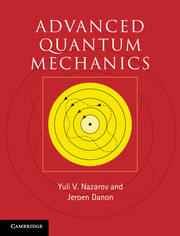Preface
Published online by Cambridge University Press: 05 February 2013
Summary
Preface
Courses on advanced quantum mechanics have a long tradition. The tradition is in fact so long that the word “advanced” in this context does not usually mean “new” or “up-todate.” The basic concepts of quantum mechanics were developed in the twenties of the last century, initially to explain experiments in atomic physics. This was then followed by a fast and great advance in the thirties and forties, when a quantum theory for large numbers of identical particles was developed. This advance ultimately led to the modern concepts of elementary particles and quantum fields that concern the underlying structure of our Universe. At a less fundamental and more practical level, it has also laid the basis for our present understanding of solid state and condensed matter physics and, at a later stage, for artificially made quantum systems. The basics of this leap forward of quantum theory are what is usually covered by a course on advanced quantum mechanics.
Most courses and textbooks are designed for a fundamentally oriented education: building on basic quantum theory, they provide an introduction for students who wish to learn the advanced quantum theory of elementary particles and quantum fields. In order to do this in a “right” way, there is usually a strong emphasis on technicalities related to relativity and on the underlying mathematics of the theory. Less frequently, a course serves as a brief introduction to advanced topics in advanced solid state or condensed matter.
- Type
- Chapter
- Information
- Advanced Quantum MechanicsA Practical Guide, pp. xi - xivPublisher: Cambridge University PressPrint publication year: 2013

